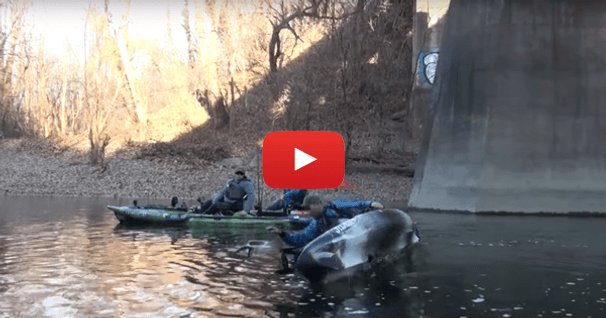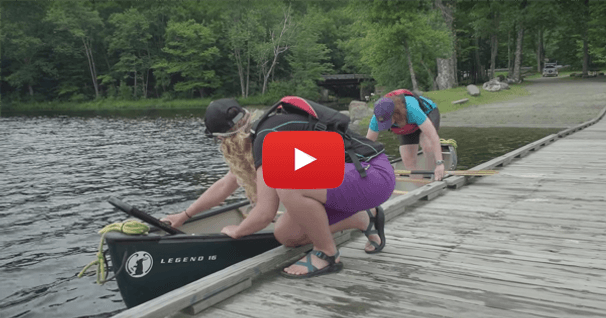Kayak Foot Brace Positioning & Edging
Whichever kayak you use, it should fit you. And fitting it out is a matter of adjusting, first, the foot braces.
You should be able to outstretch your legs and have them comfortably relaxed with your feet upright, which means you need to slide the foot pegs down until they fit comfortably in that position. You should also be able to brace with the balls of your feet, against the braces, and lift your knees up, so that in a decked kayak, you have some contact with the deck.
If you straighten one leg and lift the other knee you should also be able to edge the kayak, and that makes it easier for the kayak to turn. So if I sit on the sand here, if I lift this knee, straighten this leg and rock the kayak onto it's edge, my body weight is still over the kayak, but it's not over the center of the kayak, it's over to one side, so that I'm actually floating up the stern and lifting the stern out the water so that the kayak will turn more readily. You can see it back up right again, and both legs are in straight.
So when you come into a decked kayak, you adjust the foot braces in exactly the same way, so that you've got the same leg position; but now when I life my knee, I can contact the brace at the side here. And by straightening one leg and lifting the other knee, I can hold this position quite comfortably. If I tried to keep the same position with both knees out, it's really quite difficult, it's much better to drop the one leg.
50 years of lightweight, maneuverable, high-performing kayaks.
Check out this interview with Tom Keane, Eddyline Kayaks Co-Owner, on their journey!
So for fitting your own kayak, so it's most comfortable, the foot pegs need to be adjusted. Then, if you can't contact the deck, you're going to need to put in a little bit of foam padding underneath the deck here, so that when you do brace with the balls of your feet, you can contact these grips here. Now I've used so much thickness in this boat to make it fit completely. If the deck was higher, I'd need a thicker block of foam in there. And if I was using a boat that had a lower deck, I probably wouldn't need any foam at all.
The video clip shown above is a segment taken from the DVD: Nigel Foster's Sea Kayaking: Volume #1 Getting Started
Related Articles
As kayak anglers, you know you need to dress for immersion. But what do you do if you actually flip a…
Ever wonder what exactly the weight capacity of a board was for? Turns out it's for the performance of…
Canoes are surprisingly stable once you're settled into them, but getting in and out is a different…
A discussion on the use of a compass from a kayaking standpoint begins with basic compass savvy and then…




